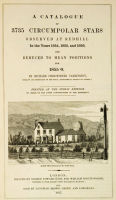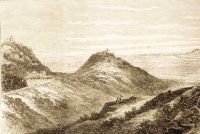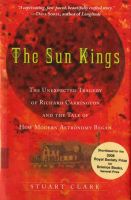 Redhill Observatory was built by Richard Carrington (1826 to 1875) on Furze Hill in 1852, and it was here that he carried out the work that would lead his major contribution to the history of astronomy. He identified solar flares and devised a system for sequential numbering of complete rotations of the sun that is still in use today. 2,000 complete rotations were logged by 1995, continuing the system began by Carrington in November 1853, he noted a total of 99 rotations in his lifetime. These discoveries lead to the publication of:
Redhill Observatory was built by Richard Carrington (1826 to 1875) on Furze Hill in 1852, and it was here that he carried out the work that would lead his major contribution to the history of astronomy. He identified solar flares and devised a system for sequential numbering of complete rotations of the sun that is still in use today. 2,000 complete rotations were logged by 1995, continuing the system began by Carrington in November 1853, he noted a total of 99 rotations in his lifetime. These discoveries lead to the publication of:
- A Catalogue of the 3753 circumpolar stars observed at Redhill in the years 1854, 1855, and 1856 (1857) (Library reference 523.89 S1x)
- Observations of the spots on the sun, from 9 November 1853, to 24 March, 1861, made at Redhill (1863)
 In the 1860s, after a few years away from Surrey, he purchased 19 acres of land in Churt where he built another house known as Jumps House and an observatory further up the hill at Middle Devil's Jump. This involved tunnelling into the hill both vertically and horizontally; the altazimuth instrument was located in the vertical tunnel enabling it to be used without a dome. This engraving shows the observatory and house and is reproduced from the Illustrated London News, Volume 59, 1871 (references J/572/51, J/572/48)
In the 1860s, after a few years away from Surrey, he purchased 19 acres of land in Churt where he built another house known as Jumps House and an observatory further up the hill at Middle Devil's Jump. This involved tunnelling into the hill both vertically and horizontally; the altazimuth instrument was located in the vertical tunnel enabling it to be used without a dome. This engraving shows the observatory and house and is reproduced from the Illustrated London News, Volume 59, 1871 (references J/572/51, J/572/48)
 In 1869 Carrington married Rosa Helen Rodway, a marriage that was to embroil him in scandal which dominated the last few years of his life. A full account of this story together with an account of his importance to modern astronomy can be found in:
In 1869 Carrington married Rosa Helen Rodway, a marriage that was to embroil him in scandal which dominated the last few years of his life. A full account of this story together with an account of his importance to modern astronomy can be found in:
- The Sun Kings: the unexpected tragedy of Richard Carrington and the tale of how Modern Astronomy began by Stephen Clark (2007) (Library reference 920CAR)
Select images to view larger versions.

